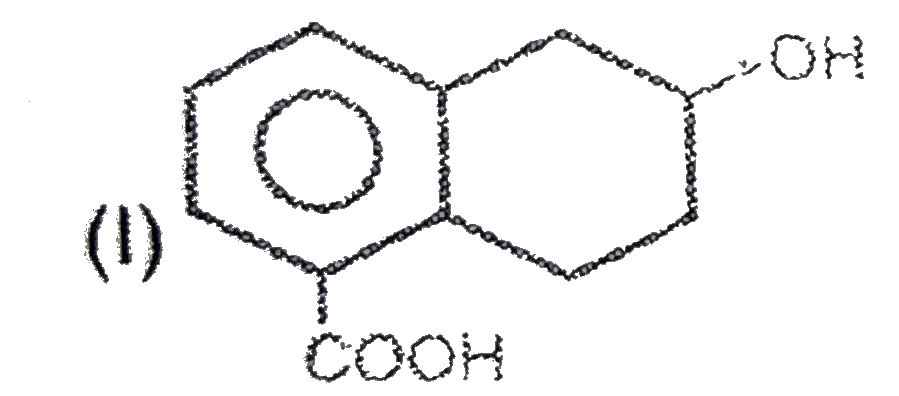The following two compounds I and II can be distinguished by using reagent

(1) , (2)Neutral
(3)Blue litmus solution , (4)Na metal
(5)(anhydrous)
1 or 3
2 or 5
4 or 5
3 or 4
The correct Answer is:B
Step by step video & image solution for The following two compounds I and II can be distinguished by using reagent (1)Aq.NaHCO_3 , (2)Neutral FeCl_3(aq.)(FeCl_3+NH_4OH+H_2O) (3)Blue litmus solution , (4)Na metal (5)HCl+ZnCl_2(anhydrous) by Chemistry experts to help you in doubts & scoring excellent marks in Class 12 exams.
Updated on:21/07/2023Topper's Solved these Questions
Similar Questions
The following two compounds I and II can be distinguished by using reagent
 " "
" " 
(a) aq. NaHCO3 " " (b) Neutral FeCl3
(c ) Blue litmus solution " " Na metal " " (e) HCl/ZnCl2 anhydrous
View SolutionThe following two compounds I and II can be distinguished by using reagent

(a) aq. NaHCO3 , Neutral FeCl3
(b) Blue litmus solution , Na metal
(c) HCl/ZnCl2 anhydrous
View Solution
Knowledge Check
Which of the following compounds decolourise Br2−H2O and also give positive test with neutral FeCl3 :
A B
B C
C D
D
Consider the following reactions,
(I) SnCl2+2FeCl3→SnCl4+2FeCl2ASnCl2 is oxidised and FeCl3 acts as oxidising agent.BFeCl3 is oxidised and acts as oxidising agent.CSnCl2 is reduced and acts as oxidising agent.DFeCl3 is oxidised and SnCl2 acts as a oxidising agent.
Compounds I and II can be distinguished by using reagent.
I II4-Amino-2methylbut-3-en-2ol4-Amino-2,2-dimethylbut-3-yn-1-ol
View SolutionAcetaldehyde and Propyne can be distinguish by :
(i) Tollen's reagent " " (ii) l2/NaOH " " (iii) Lucas reagent " " (iv) neutral FeCl3
View SolutionFeCl3.6H2O is actually:
View SolutionWhich of the following compounds after mixing can produce blue colouration?
(I) K4[Fe(CN)6]andFeCl3 solution
(II) NH4OHandCuSO4 solution
(III) Adding anhydrous CuSO4 to water
(IV) NH4OH+NiSO4 solution
Choose the correct code:
View SolutionIdentify the redox reaction out of the following reactions and also identify the oxidizing and reducing agents in them.
(a) 3HCl(aq)+HNO3(aq)→Cl2(g)+NOCl(g)+2H2O(l)
(b) HgCl2(aq)+2KI(aq)→HgI2(s)+2KCl(aq)
( c) Fe2O3(s)+3CO(g)Δ −−→2Fe(s)+3CO2(g)
(d) PCl3(l)+3H2O(l)→3HCl(aq)+H3PO3(aq)
(e) 4NH3(aq)+3O2(g)→2N2(g)+6H2O(g)
View SolutionH2S can be dreid by how many of the following reagents? Anhydrous CaCl2 conc. H2SO4,P2O3,KOH solutons, Na2CO3 soluton.
View Solution
